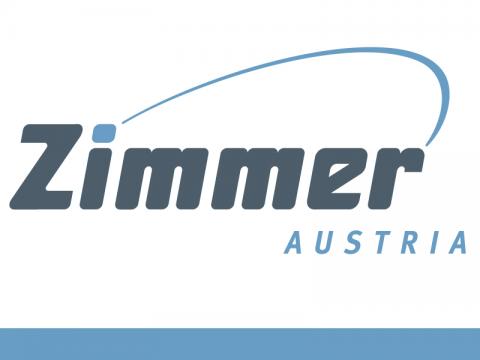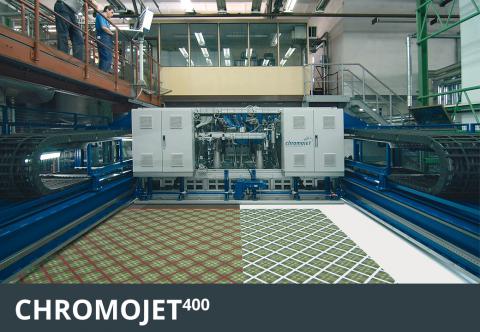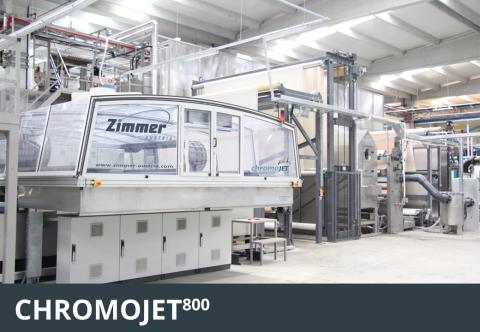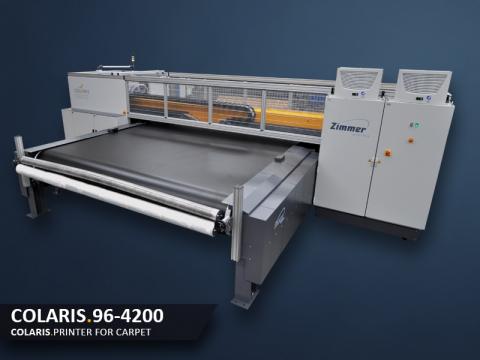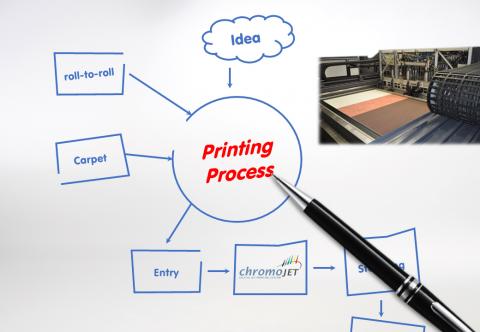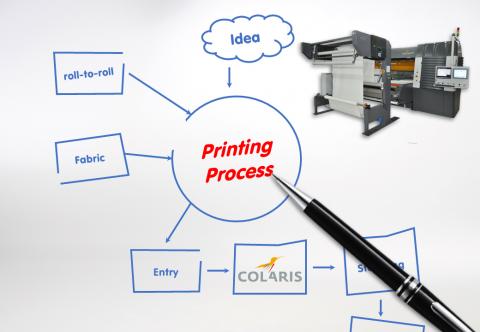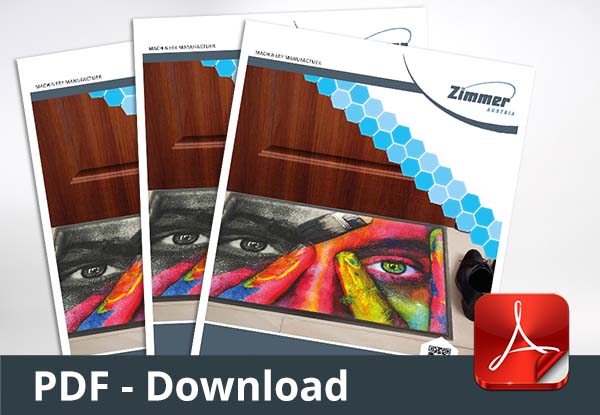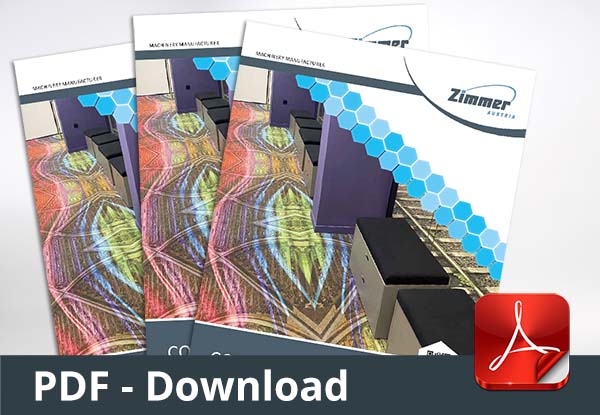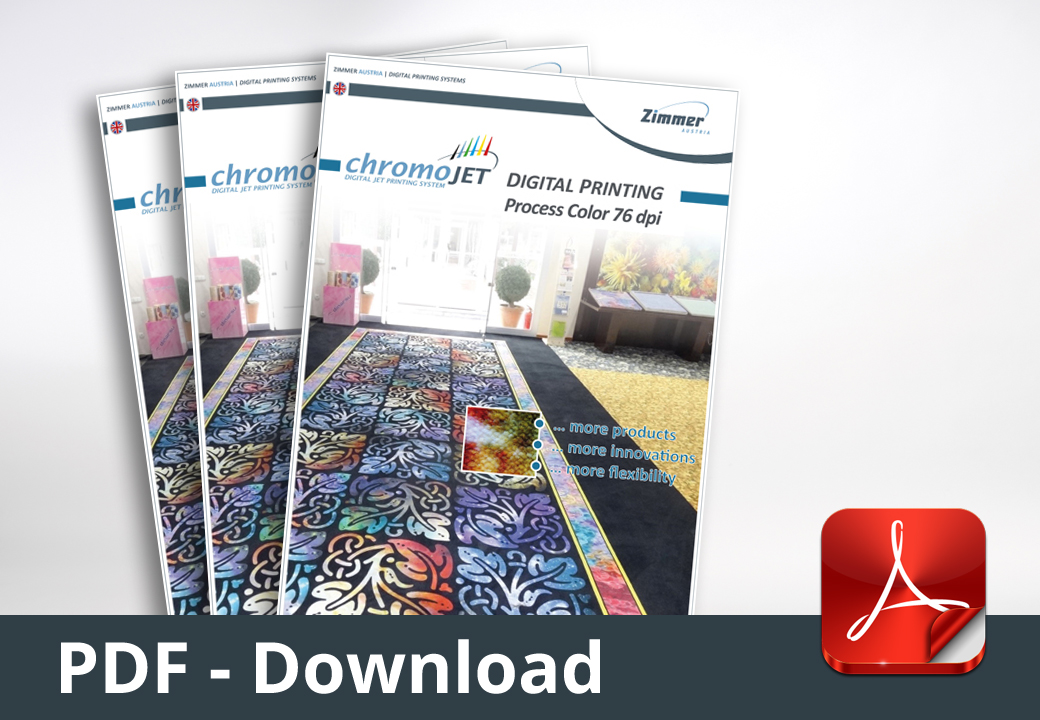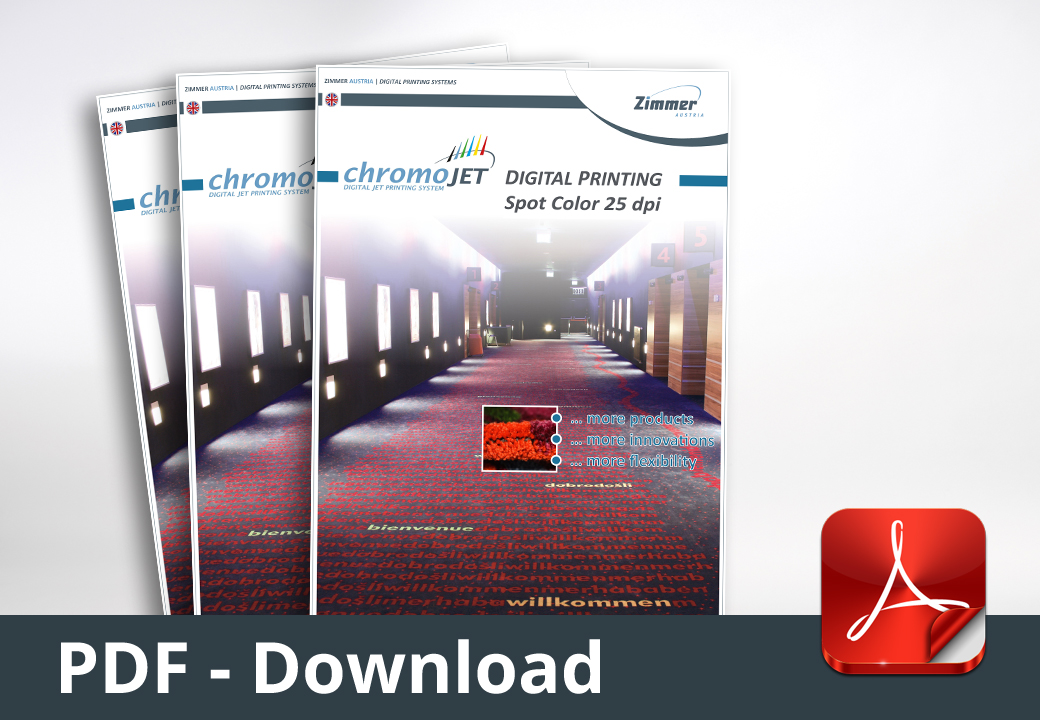Rugs, Mats and Runners
Basics
- Typical widths for rug and mat printing are 2 m / 4 m / 5 m (6 ft / 12 ft / 15 ft)
- These products are mainly used for the residential market
- Polyamide (Nylon) is the most popular face fibre. For some hospitality applications also wool or wool/nylon is processed
- Using Polyester as face fibre may well become the next trend, because it is relatively inexpensive and stain-resisting by nature
Printing Methods
Printing tufted carpets without secondary backing
- If rugs and mats are printed on carpets without secondary backing, it is essential that the back coating line will correct the bowing and skewing effects from the printing line
- Advantages: Less energy consumption for steaming and drying; the value of carpet waste is less in comparison to backed carpet
- Disadvantage: Higher risk of bowing and skewing during processing
- In order to save money, most mats on low-pile loop carpet are printed on unbacked carpet
Printing tufted carpet with secondary backing
- In the USA and the Far East, rugs are usually printed on already backed carpet
- Advantages: The carpet is very stable, bowing and skewing problems are not existing
- Disadvantages: The secondary backing or gel foam backing must be water proof and must withstand the steaming and drying process during processing
- The line must also be designed to handle the stiffer backed carpet (using accumulators instead of J-Boxes; different washing and vacuum system, longer dryer...)
Printing Technology
Printing Process
CHROMOJET printing on Polyamide (Nylon), wool, cationic dyeable Polyester and Acrylic carpets
- Carpet preparation with unrolling, pre-steaming or pre-washing, guiding
- Design printing with CHROMOJET
- Steaming for about 5 - 8 minutes
- Washing and vacuum extraction
- Application of stain-blocker, followed by optional steaming and washing
- Drying (double-impingement dryer or flow-through dryer)
- Accumulator, winder
COLARIS printing on Polyamide (Nylon), wool, cationic dyeable Polyester and Acrylic carpets
- Carpet preparation with unrolling, pre-steaming or pre-washing, guiding
- Digital pre-coating with CHROMOJET
- Design printing with COLARIS
- Penetration enhancement with SUPRAPRESS
- Steaming for about 5-8 minutes
- Washing and vacuum extraction
- Application of stain-blocker, followed by optional steaming and washing
- Drying (double-impingement dryer or flow-through dryer)
- Accumulator, winder
CHROMOJET printing on Polyester carpets with tufted on nonwoven Polyester primary backing
- Carpet preparation with unrolling, pre-steaming or pre-washing, guiding
- Design printing with CHROMOJET, with minimum pick-up
- Penetration enhancement with SUPRAPRESS
- Drying at 130°C / 266°F
- Heat-fixation in a stenter for about 2 minutes at 180°C / 356°F
- Reductive washing and vacuum extraction
- Drying
- Accumulator and winder
COLARIS printing on Polyester carpets with tufted on nonwoven Polyester primary backing
- Carpet preparation with unrolling, pre-steaming or pre-washing, guiding
- Digital pre-coating with CHROMOJET
- Design printing with COLARIS
- Penetration enhancement with SUPRAPRESS
- Drying at 130°C / 266°F
- Heat-fixation in a stenter for about 2 minutes at 180°C / 356°F
- Reductive washing and vacuum extraction
- Drying
- Accumulator and winder
Get more information in our PDF's:
